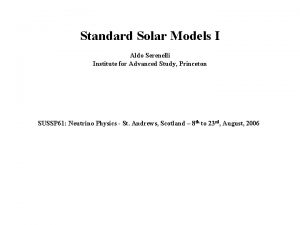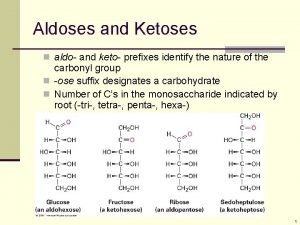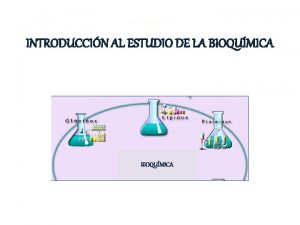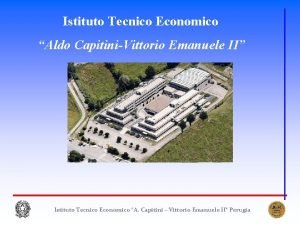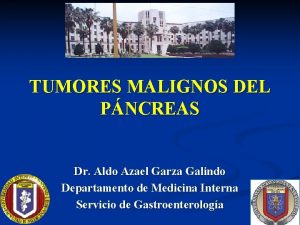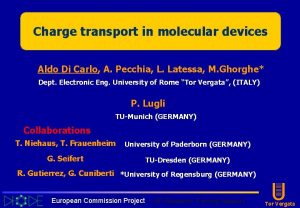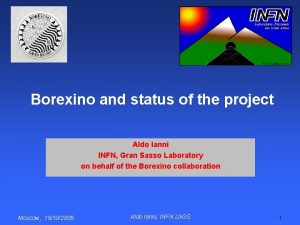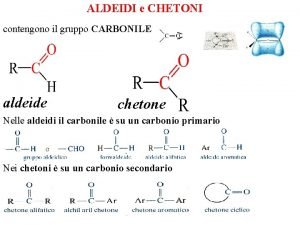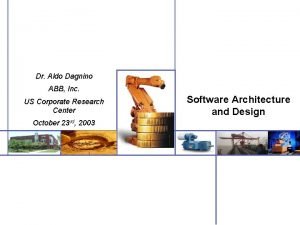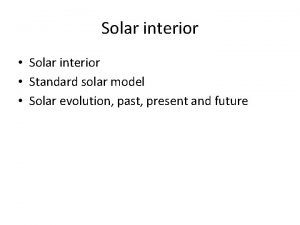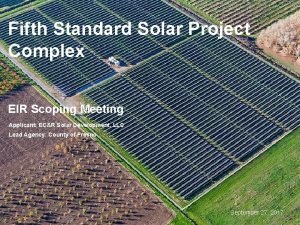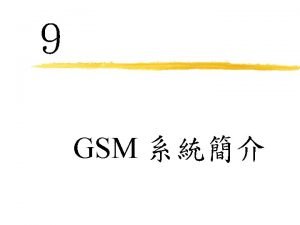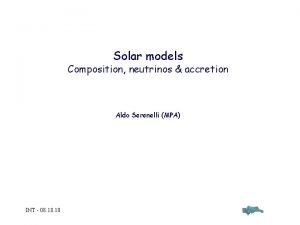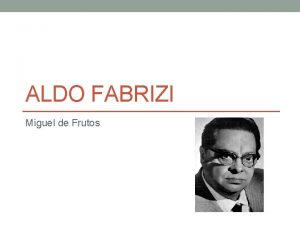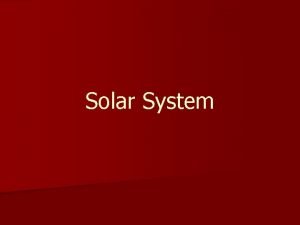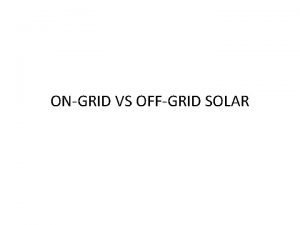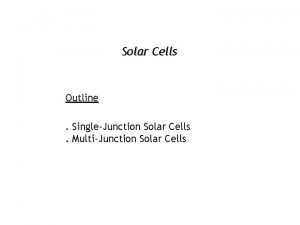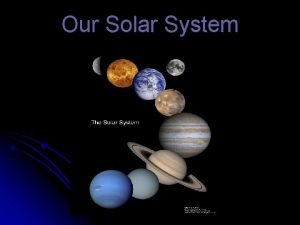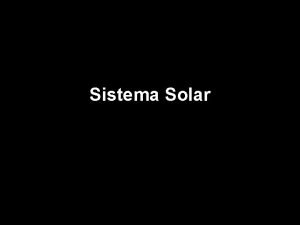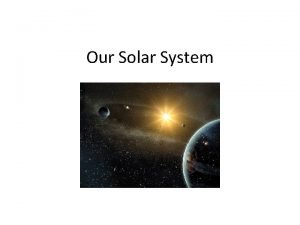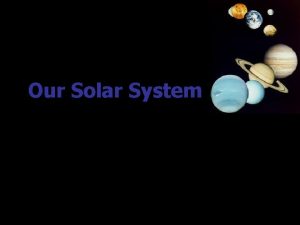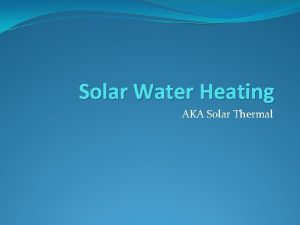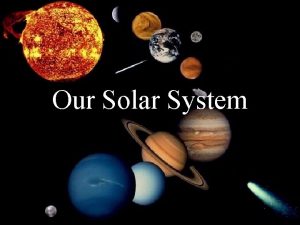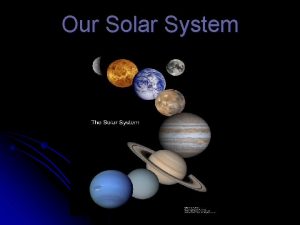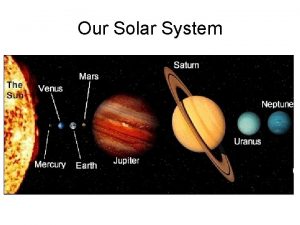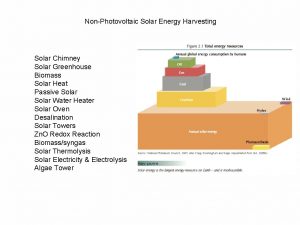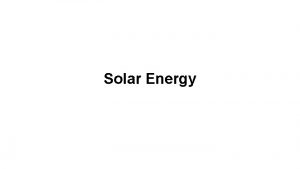Standard Solar Models I Aldo Serenelli Institute for

































- Slides: 33

Standard Solar Models I Aldo Serenelli Institute for Advanced Study, Princeton SUSSP 61: Neutrino Physics - St. Andrews, Scotland – 8 th to 23 rd, August, 2006

John N. Bahcall (1934 -2005)

Plan Lecture 1 • Motivation: Solar models – Solar neutrinos connection • Stellar structure equations • Standard Solar Models (SSM) - setting up the problem • Overview of helioseismology • History of the SSM in 3 steps Lecture 2 • SSM 2005/2006 • New Solar Abundances: troubles in paradise? • Theoretical uncertainties: power-law dependences and Monte Carlo simulations • Summary

Motivation • The Sun as a paradigm of a low-mass star. Standard test case for stellar evolution. Sun is used to callibrate stellar models • Neutrinos from the Sun: only direct evidence of solar energy sources (original proposal for the Homestake experiment that led to the Solar Neutrino Problem) • Neutrino oscillations: onstraints in the determination of LMA solution. However, SNO and SK data dominate importance of SSM minor

Motivation • Transition between MSW effect and vacuum oscillations at ~5 Me. V. 99% of solar neutrinos below 2 Me. V: additional neutrino physics at very low energies? • Direct measurements of 7 Be (pep, pp? ) (Borexino, Kam. LAND, SNO+) key to astrophysics. Check the luminosity constraint • Future measurement of CNO fluxes? Answer to Solar Abundance Problem?

What is inside a Standard Solar Models? Stellar structure – Basic assumptions • • The Sun is a self-gravitating object Spherical symmetry No rotation No magnetic field

Stellar structure – Hydrostatic equilibrium 1/2 1 D Euler equation – Eulerian description (fixed point in space) Numerically, Lagrangian description (fixed mass point) is easier (1 D) here m denotes a concentric mass shell and using and Euler equation becomes

Stellar structure – Hydrostatic equilibrium 2/2 Hydrodynamic time-scale thydr: thydr << any other time-scale in the solar interior: hydrostatic equilibrium is an excellent approximation (1)

Stellar structure – Mass conservation We already used the relation leading to (2)

Stellar structure – Energy equation 1/2 Lm is the energy flux through a sphere of mass m; in the absence of energy sources where Additional energy contributions (sources or sinks) can be represented by a total specific rate e (erg g-1 s-1) Possible contributions to e: nuclear reactions, neutrinos (nuclear and thermal), axions, etc.

Stellar structure – Energy equation 2/2 In a standard solar model we include nuclear and neutrino contributions (thermal neutrinos are negligible): e = e n – en (taking en > 0) (3) In the present Sun the integrated contribution of eg to the solar luminosity is only ~ 0. 02% (theoretical statement) Solar luminosity is almost entirely of nuclear origin Luminosity constrain:

Stellar structure – Energy transport Radiative transport 1/2 Mean free path of photons lph=1/kr (k opacity, r density) Typical values k =0. 4 cm 2 g-1, r =1. 4 g cm-3 lph 2 cm lph /R 8 3 10 11 transport as a diffusion process If D is the diffusion coefficient, then the diffusive flux is given by and in the case of radiation and where c is the speed of light and a is the radiation-density constant and U is the radiation energy density. In 1 -D we get

Stellar structure – Energy transport Radiative transport 2/2 The flux F and the luminosity Lm are related by and the transport equation can be written as or, in lagrangian coordinates Using the hydrostatic equilibrium equation, we define the radiative temperature gradient as and finally (4)

Stellar structure – Energy transport Convective transport 1/3 r+Dr: P+DP, T+DT, r+Dr Adiabactic displacement b s r: P, T, r Stability condition: Using hydrostatic equilibrium, and s b

Stellar structure – Energy transport Convective transport 2/3 Divide by and get Schwarzschild criterion for dynamical stability When does convection occur? large Lm (e. g. cores of stars M*>1. 3 M 8) regions of large k (e. g. solar envelope)

Stellar structure – Energy transport Convective transport 3/3 Using definition of and we can write and, if there is convection: F=Frad+Fconv where is the actual temperature gradient and satisfies Fconv and must be determined from convection theory (solution to full hydrodynamic equations) Easiest approach: Mixing Length Theory (involves 1 free param. ) Energy transport equation (4 b)

Stellar structure – Composition changes 1/4 Relative element mass fraction: X hydrogen mass fraction, Y helium and “metals” Z= 1 -X-Y The chemical composition of a star changes due to • Convection • Microscopic diffusion • Nuclear burning • Additional processes: meridional circulation, gravity waves, etc. (not considered in SSM)

Stellar structure – Composition changes 2/4 Convection (very fast) tends to homogenize composition where Dconv is the same for all elements and is determined from convection treatment (MLT or other) Microscopic diffusion (origin in pressure, temperature and concentration gradients). Very slow process: tdiff>>1010 yrs here wi are the diffusion velocities (from Burgers equations for multicomponent gases, Burgers 1969) Dominant effect in stars: sedimentation H Y & Z

Stellar structure – Composition changes 3/4 Nuclear reactions (2 particle reactions, decays, etc. ) here (v) is the relative velocity distrib. and s(v) is cross section Sun: main sequence star hydrogen burning low mass pp chains (~99%), CNO (~1%) Basic scheme: 4 p 4 He + 2 b+ + 2 ne+ ~25/26 Me. V

Interlude on hydrogen burning – pp chains Q=1. 44 Me. V, <Qn>=0. 265 Q=Qn=1. 44 pp neutrinos pep neutrinos Q=5. 49 Q=12. 86 pp. I 88 -89% Q=1. 59 Q=Qn=0. 86 (90%)-0. 38 (10%) Q=17. 35 7 Be neutrinos pp. II 10% 8 B neutrinos Marginal reaction: Q=19. 795, <Qn>=9. 625 Q=0. 137 Q=17. 98, <Qn>=6. 71 pp. III 1% hep neutrinos

Interlude on hydrogen burning – CNO cycle Q=1. 94 Q=2. 22, <Qn>=0. 707 CN-cycle 13 N neutrinos Q=7. 55 Q=7. 30 Q=2. 75, <Qn>=0. 996 13 N neutrinos Q=4. 97 Q=12. 13 Q=0. 600 NO-cycle Q=2. 76, <Qn>=0. 999 Q=1. 19 CNO cycle is regulated by 14 N+p reation (slowest) 17 F neut.

Stellar structure – Composition changes 4/4 Composition changes i=1, …. . , N (5)

Stellar structure – Complete set of equations (1) (2) (3) (4) (5) Microscopic physics: equation of state, radiative opacities, nuclear cross sections

Standard Solar Model – What we do 1/2 Solve eqs. 1 to 5 with good microphysics, starting from a Zero Age Main Sequence (chemically homogeneous star) to present solar age Fixed quantities Solar mass M 8=1. 989 1033 g 0. 1% Kepler’s 3 rd law Solar age t 8=4. 57 109 yrs 0. 5% Meteorites Quantities to match Solar luminosity Solar radius Solar metals/hydrogen ratio L 8=3. 842 1033 erg s-1 0. 4% Solar constant R 8=6. 9598 1010 cm 0. 1% Angular diameter (Z/X)8= 0. 0229 Photosphere and meteorites

Standard Solar Model – What we do 2/2 3 free parameters: • Convection theory has 1 free parameter: a. MLT determines the temperature stratification where convection is not adiabatic (upper layers of solar envelope) • 2 of the 3 quantities determining the initial composition: Xini, Yini, Zini (linked by Xini+Yini+Zini=1). Individual elements grouped in Zini have relative abundances given by solar abundance measurements (e. g. GS 98, AGS 05) Construct a 1 M 8 initial model with Xini, Zini, (Yini=1 - Xini-Zini) and a. MLT, evolve it during t 8 and match (Z/X)8, L 8 and R 8 to better than one part in 10 -5

Standard Solar Model – Predictions • Eight neutrino fluxes: production profiles and integrated values. Only 8 B flux directly measured (SNO) so far • Chemical profiles X(r), Y(r), Zi(r) electron and neutron density profiles (needed for matter effects in neutrino studies) • Thermodynamic quantities as a function of radius: T, P, density (r), sound speed (c) • Surface helium Ysurf (Z/X and 1=X+Y+Z leave 1 degree of freedom) • Depth of the convective envelope, RCZ

The Sun as a pulsating star - Overview of Helioseismology 1/4 • Discovery of oscillations: Leighton et al. (1962) • Sun oscillates in > 105 eigenmodes • Frequencies of order m. Hz (5 -min oscillations) • Individual modes characterized by radial n, angular l and longitudinal m numbers

The Sun as a pulsating star - Overview of Helioseismology 2/4 • Doppler observations of spectral lines: velocities of a few cm/s are measured • Differences in the frequencies of order m. Hz: very long observations are needed. Bi. SON network (low-l modes) has data collected for 5000 days • Relative accuracy in frequencies 10 -5

The Sun as a pulsating star - Overview of Helioseismology 3/4 • Solar oscillations are acoustic waves (p-modes, pressure is the restoring force) stochastically excited by convective motions • Outer turning-point located close to temperature inversion layer. Inner turning-point varies, strongly depends on l (centrifugal barrier) Credit: Jørgen Christensen-Dalsgaard

The Sun as a pulsating star - Overview of Helioseismology 4/4 • Oscillation frequencies depend on r, P, g, c • Inversion problem: using measured frequencies and from a reference solar model determine solar structure Output of inversion procedure: dc 2(r), dr(r), RCZ, YSURF Relative difference of c between Sun and BP 00

History of the SSM in 3 steps • Step 1. Predictions of neutrino fluxes by the SSM to high (factor 2. 5/3) w. r. t. to radiochemichal experiments: solar neutrino problem. 8 B flux too sensitive to central temperature (8 B) T 20 -25. Problem with SSM? Specultive solutions of all kinds. This lasted about 30 years. • Step 2. Precise calculations of radiative opacities (OPAL group). Helioseismology: results from low and mid-l sample well the solar interior (1995 -1997). SSM correct in solar interior to better than 1% Bahcall et al. 1996

History of the SSM in 3 steps • Step 3. The BP 00 model and Sudbury Neutrino Observatory BP 00: Bahcall, Pinsonneualt & Basu (2001) RCZ=0. 714 / 0. 713 ± 0. 001 YSUP=0. 244 / 0. 249 ± 0. 003 (8 B)= (5. 05 ± 0. 91) x 106 cm-2 s-1 SK(8 B)= (2. 32 ± 0. 09) x 106 cm-2 s-1 (only sensitive to ne)

History of the SSM in 3 steps • Step 3. SNO: direct measurement of the (8 B) flux. SNO collaboration (2002) BP 00(8 B)/ SNO(8 B)= 0. 99 Solution to the Solar Neutrino Problem !!!!
 Sun cno cycle
Sun cno cycle Herbert stoddard
Herbert stoddard Aldo sugars
Aldo sugars Istituto comprensivo aldo moro sutri
Istituto comprensivo aldo moro sutri Aldo mancurti
Aldo mancurti Aldo novak
Aldo novak Aldo prefix
Aldo prefix Testa ng
Testa ng Epimero
Epimero Istituto capitini perugia
Istituto capitini perugia Ejemplos de instrucciones en modo imperativo
Ejemplos de instrucciones en modo imperativo Carcinoma pancreático
Carcinoma pancreático How does hypokalemia cause metabolic alkalosis
How does hypokalemia cause metabolic alkalosis Aldo decisiones
Aldo decisiones Aldo valentim
Aldo valentim Aldo montano celiachia
Aldo montano celiachia Aldo di carlo
Aldo di carlo Aldo ianni
Aldo ianni Chetoni nomenclatura
Chetoni nomenclatura Aldo international shipping
Aldo international shipping Aldo de albuquerque barreto
Aldo de albuquerque barreto Aldo dagnino
Aldo dagnino Whosale solar
Whosale solar An inexhaustible source of energy
An inexhaustible source of energy What are modals and semi modals
What are modals and semi modals Standard solar model
Standard solar model Fifth standard solar
Fifth standard solar New standard institute
New standard institute Kontinuitetshantering i praktiken
Kontinuitetshantering i praktiken Novell typiska drag
Novell typiska drag Tack för att ni lyssnade bild
Tack för att ni lyssnade bild Vad står k.r.å.k.a.n för
Vad står k.r.å.k.a.n för Shingelfrisyren
Shingelfrisyren En lathund för arbete med kontinuitetshantering
En lathund för arbete med kontinuitetshantering
